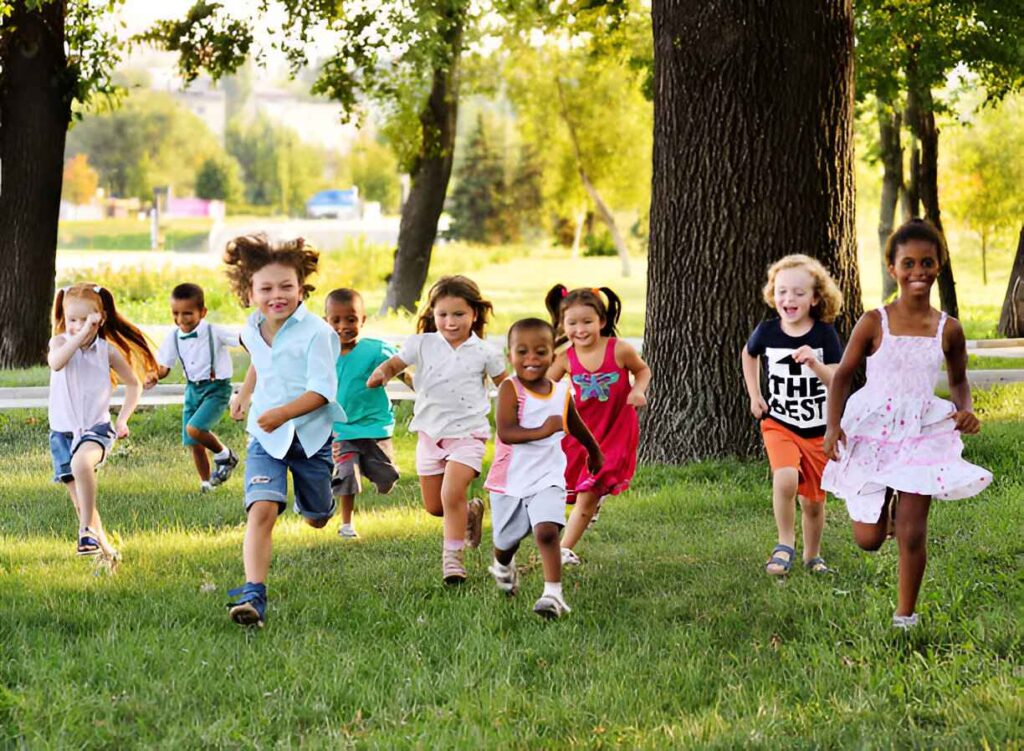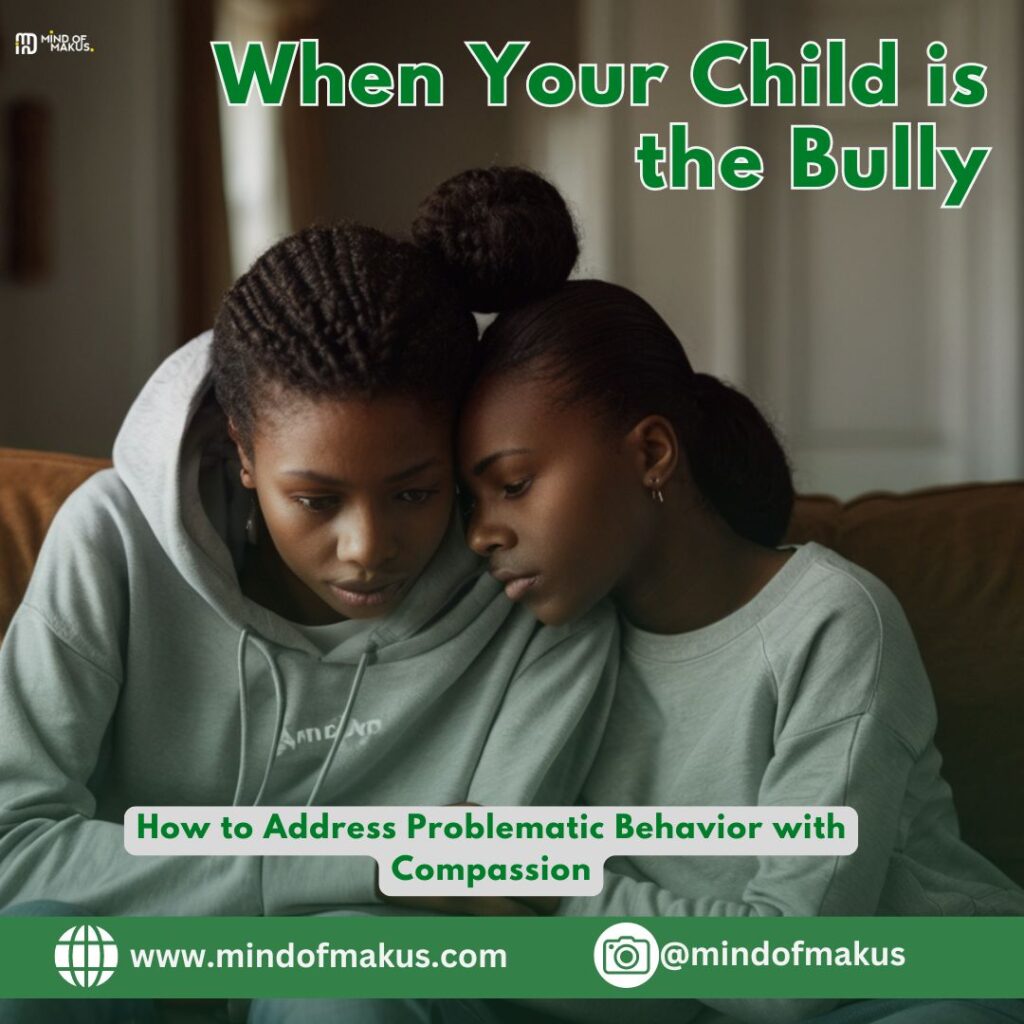Hello dear friend,
Welcome to the last weekend of September 2024.
Did you miss any of our last three posts? You can read them below:
I realize it’s coming to the end of the year and that fatigue is setting in, check out these autumn posts you might find useful
- Self-Care Spotlight: Empowering You to Prioritize Mental Wellness
- Cultivating Self-Awareness: The Key to Thriving Relationships
- Navigating Life’s Rhythms: Pacing Yourself through Time and Season
If you are a parent, you know you strive to raise kind, respectful children. However, it can be alarming and distressing to discover that your child may be engaging in bullying behaviour.
I remember reading on an online forum about a parent who shared how helpless and flabbergasted she felt when she heard her son was a bully. Another parent shared that his daughter was a bully but very kindly encouraged the poster.
It is sometimes easy to look at others and think, “It can never be my child”, but with the benefit of life experience, we learn to approach such things with compassion.
We have bullies everywhere, at every level and it only continues when parents live in denial and don’t stop it early enough. Next thing you know, you have that boss who is also a bully or that university bestie who excludes you because you didn’t let them copy your notes in the exam.
Bullying
The repetitive, intentional hurting of one person or group by another person or group, where the relationship involves an imbalance of power. Bullying can be physical, verbal or psychological. It can happen face-to-face or online.
– Anti-Bullying Alliance
While it’s natural to feel concerned, it’s essential to approach the situation with compassion and a commitment to helping your child grow. As much as possible, save your drama for your quiet time in prayer. Children don’t benefit from seeing their parents become like children and express uncontrolled negative behaviour.
Bullying is often a sign of underlying emotional or social challenges, and addressing it with care can lead to positive change.
In this blog post, we’ll explore how to recognise bullying behaviour in your child, why it happens, and how to address it with compassion and guidance.


Recognising Bullying Behavior
While all children may occasionally misbehave, bullying is defined by repeated, intentional actions meant to harm, embarrass, or exert power over others. If you notice these behaviours in your child, it’s essential to intervene early.
Bullying can manifest in different ways, including:
– Physical Aggression: Hitting, pushing, or other physical harm.
– Verbal Bullying: Name-calling, teasing, or making cruel remarks.
– Social Bullying: Excluding others, spreading rumours, or manipulating social situations to hurt someone.
– Cyberbullying: Using technology, like social media or texting, to harass or demean others.
Understanding Why Children Bully
Bullying is often a symptom of deeper issues, not a reflection of who your child is at their core. Children may bully others for various reasons, including:
– Seeking Power or Control: Some children bully to feel in control of a situation or to elevate their social status.
– Insecurity: Children who feel insecure or lack self-confidence may bully others to mask their own vulnerabilities.
– Peer Pressure: Children may engage in bullying because they want to fit in or be accepted by a particular group of friends.
– Emotional Struggles: Feelings of anger, frustration, or anxiety can sometimes manifest as aggression toward others.
– Experiencing Bullying Themselves: A child who has been bullied may act out as a way to regain a sense of power.
When you understand the underlying reasons for bullying, you can better address the root cause and guide your children toward healthier behaviours and expressions of emotions.
Subscribe to My Newsletter
Addressing Problematic Behavior with Compassion
1. Stay Calm and Open-Minded
– If you learn that your child is bullying others, staying calm and avoiding reacting with anger or punishment is essential. Instead, approach the situation with an open mind, seeking to understand what’s driving your child’s behaviour. Express your concern without shaming them, and reassure your child that you’re there to help them improve, not to label them as “bad.”
Example: “I am disappointed to hear this has been happening. Can we talk about it in an hour so we can figure out how to do better?”
2. Have an Honest Conversation
– Sit down with your child for an honest conversation about their actions. Ask them to explain what’s been happening and how they feel about it. Be patient and listen carefully without jumping to conclusions or interrupting. This will help you gain insight into their motivations and emotions.
Take a notepad so when you want to speak, you write instead; this helps you stay focused on listening instead of interrupting. The goal is to get all the facts and surrounding context.
Encourage them to think about the impact of their behaviour on others by asking questions like, “How do you think the other person felt when that happened?” Helping your child develop empathy is crucial in stopping bullying behaviour.


3. Set Clear Expectations and Boundaries
– While compassion is key, it’s also important to set clear boundaries about what is and isn’t acceptable behaviour. Explain that bullying is not tolerated, and there will be consequences for hurtful actions. Be specific about what behaviours need to change and how your child can demonstrate more kindness and respect toward others.
For example, you can set guidelines about how to treat peers, encourage them to practice apologising and establish rules around technology use to prevent cyberbullying. Ensure that as a parent if you agree on a consequence, you enforce it. Otherwise, you actually set up your child to fail in this new pursuit.
4. Teach Empathy and Social Skills
– Teaching empathy is a powerful way to prevent bullying. Help your child understand how their actions affect others by encouraging them to put themselves in someone else’s shoes. Discuss scenarios where they can practice kindness, such as standing up for a classmate or including others in group activities. I personally encourage children to write reflection notes and offer some guidance on how to do a good reflection.


Social skills like conflict resolution, emotional regulation, and effective communication can also reduce the likelihood of bullying. Role-playing scenarios with your child can help them learn how to handle disagreements without resorting to aggression.
5. Monitor and Guide Social Interactions
– Pay attention to your child’s social interactions both at school and online. Talk to their teachers, coaches, or other caregivers to get a sense of how they behave in different environments. If your child is struggling with social situations or friendships, offer guidance on how to navigate these dynamics in a positive way.
If your child engages in online bullying or uses technology in harmful ways, establish clear rules for internet use and monitor their digital activity closely. I am quite draconian with tech for children, take it away let them find creative ways to engage their mind, buy them a non internet phone for communication only for a while.
I remember a relative sent her teenage daughter to Nigeria to live with her grandparents for a while due to this kind of behaviours. That young lady is now a responsible adult who now thinks it was the only way to get her thinking about her studies more than friends, at the time.
You can Support My Work
6. Encourage Positive Peer Relationships
– Help your child build positive, supportive friendships that encourage good behaviour. Children who have strong connections with kind and respectful peers are less likely to engage in bullying. Encourage activities that foster teamwork, collaboration, and mutual respect, such as team sports, group projects, or volunteer work.
7. Seek Professional Support If Necessary
– In some cases, bullying behaviour may be a sign of deeper emotional or behavioural challenges that require professional intervention. If your child is struggling to change their behaviour or if you notice signs of underlying anxiety, depression, or anger, consider seeking the support of a counsellor or therapist. Professional guidance can help your child develop healthier coping mechanisms and improve their emotional well-being.
8. Pray with and for your Child
Pray with and for your child, they are learning a lot everyday about the world. I am particularly passionate about praying about childhood friends that are forming all around us. We have a responsibility to be parents, but also spiritual heads over our households; to walk in that consciousness is to understand the magnitude of the task ahead.
Keep your children accountable and hold the boundaries of your family and faith. It is the parent’s duty to create and hold boundaries, it is the child’s duty to test those boundaries.
Reinforcing Positive Change
Once you’ve addressed the issue of bullying, it’s essential to reinforce positive behaviour and celebrate your child’s progress. Acknowledge when they make kind choices, resolve conflicts peacefully, or show empathy toward others. Positive reinforcement encourages them to continue practising healthy social interactions. Set a good example, work on your own personal weaknesses, and find help if you have a tendency to bully your child or others. It will be a losing battle if you are not setting a good example of how to treat others.
Additionally, maintain an ongoing dialogue about bullying, kindness, and respect. Check-in with your child regularly to see how they’re feeling and whether they’re experiencing any challenges. This ongoing support will help them continue growing in their social and emotional development.
In conclusion, discovering that your child is bullying others can be difficult. Still, with a compassionate, proactive approach, you can help them change their behaviour and develop healthier ways of relating to others.
Remember, addressing bullying is not about punishment but about teaching and guiding your child to make better choices. Your child can overcome these challenges and build stronger, healthier relationships with your support.
Until next time, stay authentic,
Stay resilient, and continue to honour your needs.
Live wholeheartedly,
Amaka
2 Cor 3:2(MSG)
You yourselves are all the endorsement we need. Your very lives are a letter that anyone can read by just looking at you. Christ himself wrote it—not with ink, but with God’s living Spirit; not chiselled into stone, but carved into human lives—and we publish it.



